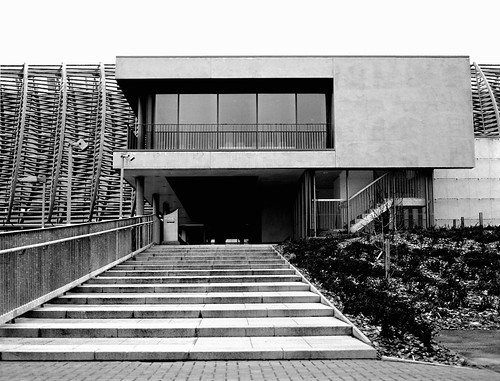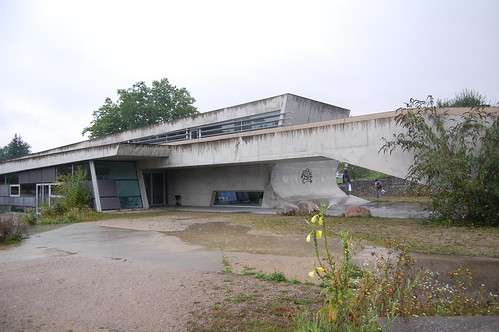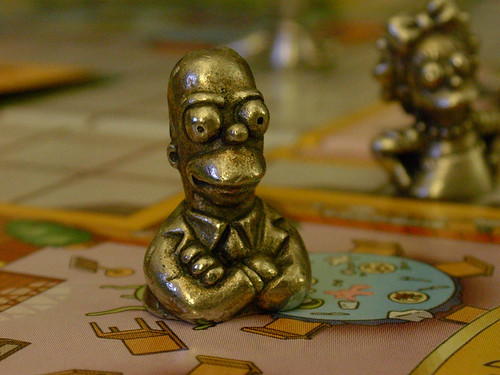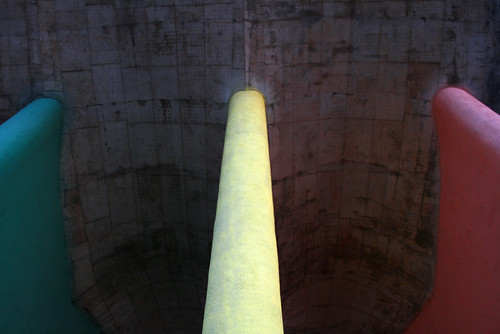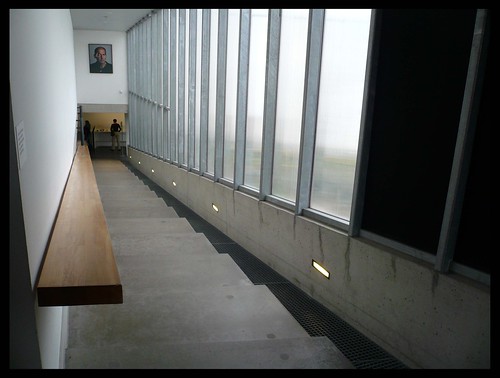:: Abitare
:: a+t
:: Archis
:: Architectural Record
:: Architectural Review
:: Architect Magazine
:: Architecture and Culture
:: Architecture Australia
:: ark
:: art 4D
:: A10
:: Azure
:: Building Design
:: DETAIL
:: Domus
:: Dwell Magazine
:: El Croquis
:: Frame Magazine
:: Harvard Design Magazine
:: Icon Magazine
:: Japan Architect/A+U
:: MARK Magazine
:: Metropolis Magazine
:: Monu
:: The Plan Magazine
:: The Next American City
:: Quaderns
:: RIBA Journal
:: 32BNY
:: Topos
:: Ume Magazine
:: Via Arquitectura
:: Wallpaper*
Architectural engineering design.autocad career .learnin,news,architecture design tutorial,
Sunday, September 30, 2007
Print Journals
Today's archidose #139
Limerick County Council HQ in Limerick, Ireland by Bucholz McEvoy Architects, 2004.
To contribute your Flickr images for consideration, just:
:: Join and add photos to the archidose pool, and/or
:: Tag your photos archidose
Saturday, September 29, 2007
Lights among the ruins
That village is San Pietro, an "11th-century cobblestone mountain village nestled among wild figs and cactus," as well as the scene of months of horrific fighting between Allied and German troops.
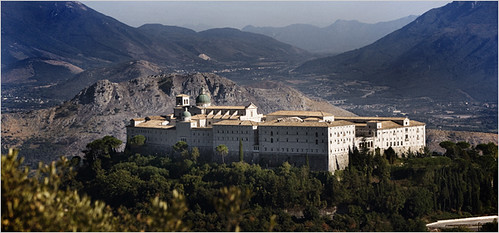 [Image: The reconstructed abbey atop Monte Cassino, as photographed by Stephanie Kuykendal for The New York Times].
[Image: The reconstructed abbey atop Monte Cassino, as photographed by Stephanie Kuykendal for The New York Times].Nearby, atop Monte Cassino, was "one of the holiest sites in Christendom," a monastery "founded by St. Benedict in the sixth century, a shrine of Western civilization" – indeed, "a center of art and culture dating back nearly to the Roman Empire" – which the Allies bombed into rubble, suspecting (or not suspecting, but caught up nonetheless in the machinations of bad intelligence and unquestioned orders) that German troops had taken refuge there.
"After the battle ended," we read, the entire chain of small mountain valleys in which San Pietro once stood "would be left uninhabitable for years, demolished by Allied bombs, beset by malaria."
So this may be a bit rambling, and otherwise unrelated, but while working on The BLDGBLOG Book tonight (due out Spring 2009! from Chronicle Books! buy loads!), I was re-reading W.G. Sebald's extraordinary On the Natural History of Destruction.
At one point in the book Sebald describes the literally shell-locked life of people who had managed to stay on in the destroyed cities of northern Germany during WWII. He describes "the unappetizing meals they concocted from dirty, wrinkled vegetables and dubious scraps of meat, the cold and hunger that reigned in those underground caverns, the evil fumes, the water that always stood on the cellar floors, the coughing children and their battered and sodden shoes."
Battling grotesquely bloated rats and enormous green flies, these "cave dwellers," as Sebald calls them, lived with the "multiplication of species that are usually suppressed in every possible way," amidst the gravel and shattered windowframes of their now "ravaged city."
Based on an eyewitness account written by an Allied Air Commander, Sebald then refers to "the terrible and deeply disturbing sight of the apparently aimless wanderings of millions of homeless people amidst the monstrous destruction, [which] makes it clear how close to extinction many of them really were in the ruined cities at the end of the war."
For some reason the next line just haunts me:
- No one knew where the homeless stayed, although lights among the ruins after dark showed where they had moved in.
What "monstrous destruction" of world war and oil shortages and global terror and climate change might we, too, have to face someday?
In twenty years' time will I be out holding up some pathetic light among the ruins of a destroyed city, wondering where my wife is, dying of thirst, deaf in one ear, covered in radiation burns?
Or is that just a peculiarly American form of pessimist survivalism? Or do I just read too much Sebald?
Book of the Moment

What impresses the most is the quality of the projects and the clear and consistent layout, making the presentation of details that much stronger. Many other detail-oriented books presenting projects side by side tend to have drawings that vary in quality and content, making some projects more helpful to the reader than others, or just more interesting to look at.

The extra effort required to create consistent drawings pays off in the form of having a solid reference, rather than just a hurried and inexpensive collection of what's cool now.

"Virignia McLeod studied architecture in Australia and has worked for a number of private practices in London. She was the editor of The Phaidon Atlas of Contemporary World Architecture and currently works as a freelance writer and editor." [source]
Friday, September 28, 2007
Today's archidose #138
The Earl V. Moore Building by Eero Saarinen (1964), home of the Music Department, on the campus of The University of Michigan in Ann Arbor.
To contribute your Flickr images for consideration, just:
:: Join and add photos to the archidose pool, and/or
:: Tag your photos archidose
Thursday, September 27, 2007
The Worst Buildings of NYC
Here's a slideshow of listener submissions:
(via Archinect)
Wednesday, September 26, 2007
West Side Gets Crowded

Ban's addition, revealed at Curbed, is named for the large operable shutters on the facade that open and close to bring outside inside, or vice-versa. It's an interesting idea that seems more suited to the west-facing site of the IAC HQ, rather than the north-facing lot it occupies. Regardless, these large shutters will give the building its character, particularly the combination of open and closed and in-between from the different tenants. I'm guessing the closed view of the rendering -- and image that makes the building like a solid block with some subtle relief -- will be a rarity.
(via Archinect)
Sound Pressure
 [Image: Luigi Russolo and his noise machines... something otherwise irrelevant to this post].
[Image: Luigi Russolo and his noise machines... something otherwise irrelevant to this post].An excerpt:
- Wired: When you were growing up, hearing music often required going to see it performed. But iPods make music ubiquitous, like mental air-conditioning. What have we gained or lost by that?
Sacks: At first it would seem to be a wonderful gain. Darwin might have had to go to London to see a concert. But I can't help wondering if the incidence of earworms and musical hallucinations is higher now, with background music in every public place. You can't go to a restaurant without music, and they get offended if you ask them to turn it off. They feel it's part of their creativity – they're doing it for you.
The brain is very sensitive to music; you don't have to attend to it to record it internally and be affected by it. I think we may be exposed to too much loud and repetitive music. One patient of mine has epileptic seizures induced by music and has to wear earplugs in New York City. It's a dangerous place for him.
For some reason, though, this reminds me of an anecdote I read five or six years ago about French minimalist/proto-ambient composer Erik Satie – about whom you can read more in David Toop's excellent book Ocean of Sound.
So Satie, the anecdote goes, once tried to compose – and have performed, live, in a Paris restaurant – literal background music. It was music meant to flavor a room the way perfume might scent the boudoir: something you don't quite notice but is there nonetheless. Or, in a slightly more famous analogy, it was music meant to be experienced like furniture: it may be there in the room with you – but you didn't have to pay attention to it.
It was just part of the design.
In any case, social conventions of the time being what they were, whenever Satie's musicians, installed there in the restaurant, started to play, all the diners would stop talking, put their utensils down, and politely listen.
But that wasn't the point.
Satie thus had to walk around the restaurant almost continuously for the next half-hour, passing from patron to patron, demanding that they stop listening to his music...
Tuesday, September 25, 2007
Urban Noise Generation
"For some," we read, "living in a city is a loud, unpleasant babble of intrusive noise. For others it is a soundscape of calming tones that lift the spirits and brighten the day. Now a £1m, three-year research project is building a database of noises that people say improve their environment. It will translate those findings into design principles to help architects create sweeter-sounding cities."
Wonderfully, the leader of the study "is looking for members of the public to take part in mass 'sound walks' through cities or in laboratory listening tests, where the team will use MRI scanners to measure participants' brain activity as they are played a variety of urban noises."
They will thus develop an artificial soundtrack for the urban future.
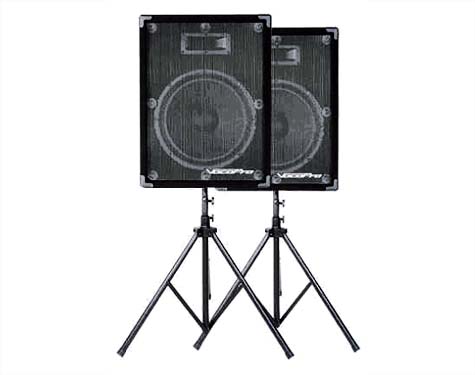 Some of the "surprisingly agreeable" sounds discovered thus far include "car tyres on wet, bumpy asphalt, the distant roar of a motorway flyover, the rumble of an overground train and the thud of heavy bass heard on the street outside a nightclub."
Some of the "surprisingly agreeable" sounds discovered thus far include "car tyres on wet, bumpy asphalt, the distant roar of a motorway flyover, the rumble of an overground train and the thud of heavy bass heard on the street outside a nightclub."We even read that the sounds of "skateboarders practising in underground car parks" are considered "kind to the ear."
As part of his auditory interest in urban design, then, the leader of the study wants "to see more water features and sound-generating sculptures next to busy roads," and he wants to use buildings and trees "to scatter, deaden or reflect sound."
The entirety of city space could thus be instrumentalized – literally made more musical.
However, I'm curious how this study will deal with different moral and/or cultural expectations for urban noise. The sounds of neighbors having sex, for instance, and those who voyeuristically listen-in: should you play copulatory noises through hidden speakers in the downtown park? Thus calming a certain segment of the population?
What about the Muslim call to prayer?
And could your city someday start a season-long program, inviting sonic grandmasters to come in once a month and play new sounds for the whole metropolis, resoundtracking highways and civic infrastructure, giving the sewers a tune, adding audio to everything?
Or is that just called a radio DJ?
(Thanks, Nicolai! Earlier on BLDGBLOG: Audio Architecture and New York City in Sound).
Literary Dose #15
"Thinking about daylight and artificial light I have to admit that daylight, the light on things, is so moving to me that I feel it almost as a spiritual quality. When the sun comes up in the morning -- which I always find so marvelous, absolutely fantastic the way it comes back every morning -- and casts its light on things, it doesn't feel as if it quite belongs in this world. I don't understand light. It gives me the feeling there's something beyond me, something beyond all understanding. And I am very glad, very grateful that there is such a thing. And I have that feeling here too; I'll have it later when we go outside. For an architect that light is a thousand times better than artificial light."- Peter Zumthor, from Atmospheres (2006). The book is a transcript of a lecture Zumthor gave at Wendlinghausen Castle in East-Westphalia-Lippe, Germany in 2003.
Monday, September 24, 2007
Inhaling 9/11
 [Image: The South Tower of the World Trade Center on 9/11; photographer unknown].
[Image: The South Tower of the World Trade Center on 9/11; photographer unknown].On the flight over to Chicago last week I read an intense and frightening article in Discover about the wide range of post-9/11 illnesses that have begun to develop in New York City.
As most people no doubt know, tens upons tens – if not hundreds – of thousands of people literally inhaled the World Trade Center towers in the collapse and aftermath of 9/11.
It was the malign aerosolization of late modernist architecture, producing "the most dangerous atmospheric conditions ever to occur on American soil."
The "sky was glittering with glass" that day:
- A toxic cloud composed of industrial waste and human remains crept out from the aching, smoldering pit at Ground Zero and wound its way into the adjoining streets. Its vapors circled around and up buildings, pumped in and out of nostrils, mouths, and lungs, and stung the eyes of every woman, child, man, bird, and beast within a wide range. It spread itself on building walls and inside boiler rooms and left its trail on parked cars, handrails, and public benches. That day, New York City was blinded by a perpetually sickening haze. It poisoned the minds of politicians who acted with hubris and paranoia. It obscured the vision of responders and residents, many of whom acted with heroism and reckless bravado, never thinking that their actions might be endangering themselves, their families, their cities, and their very future. The cloud billowed southward, over the river, enveloping everything in the dust and debris of blown-apart lives.
Indeed, the "number of seriously ill New Yorkers could climb to 300,000 in the near future," and these serious illnesses run the gamut from "internal chemical burns" and "chronic respiratory and gastrointestinal conditions," many of which will be fatal, to "rare blood cancers" and asthma attacks.
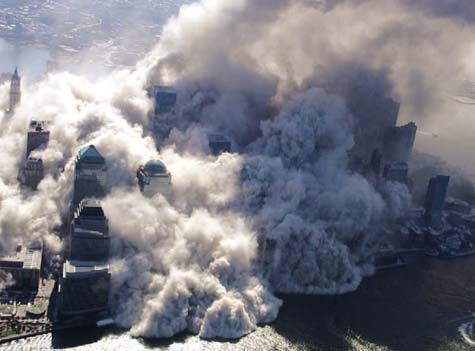 [Image: "Within a few hours’ time, a person exposed to the fumes could ingest toxins that would otherwise take a year to accumulate in a typical environment"; photographer unknown].
[Image: "Within a few hours’ time, a person exposed to the fumes could ingest toxins that would otherwise take a year to accumulate in a typical environment"; photographer unknown].None of which seems surprising when you read about what actually went up in the air that day:
- The Twin Towers contained tens of thousands of computer terminals, each housing about four pounds of lead, and an untold number of fluorescent bulbs that contained mercury. Released metal particles from the smoldering pit of the World Trade Center were so fine that they could easily slip past a paper face mask and reach deep into lung tissue, where they are poorly soluble in lung fluid. Metals and glass can remain trapped there for long periods of time and make their way into the heart.
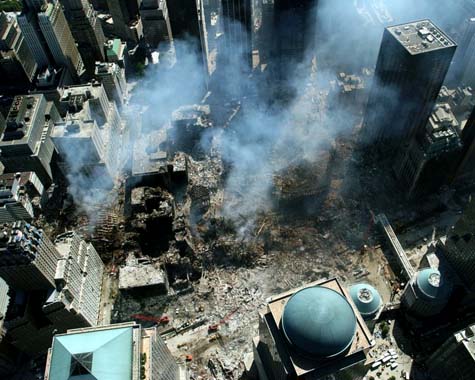 [Image: After the towers' collapse; photographer unknown].
[Image: After the towers' collapse; photographer unknown].After much more detail about both the "plume" itself and about the various environmental failures that occurred up and down the political chain of command, the article ends magnificently: "While the courts try to determine who is responsible for the environmental debacle following 9/11, countless New Yorkers continue to live and work near Lower Manhattan with the assumption that it is safe. The dust is now out of sight, out of mind, and possibly in their lungs, hearts, and bloodstreams."
So this is what happens when you pulverize and burn modern architecture: plumes of cadmium, thallium, benzene, silver, zinc, osmium, carbon monoxide, sulfuric acid, nickel, and lead drift outward into the city, snowing invisibly into local waterways, settling on windowsills and dusting the floors of homes, shops, and offices, salting food on plates at outdoor cafes, entering bloodstreams and sticking to clothes. Fiberglass and fire retardants, arsenic and rubber – asbestos, soot, and paper – all enter the atmosphere and form undetectable weather systems too vaporous and ghostlike to track.
Which leads me to wonder about what sort of post-bombardment aerial conditions existed in cities like Dresden or Hiroshima, after they were destroyed in World War II, when architecture was not made from such things – when there were not home computers and circuitboards to burn and when homes weren't full of flame retardant fabrics and PVC.
Were different and earlier forms of pulverized architecture somehow safer to breathe?
In fact, if I can be excused a brief moment of contextually inappropriate speculation, would it be possible to impregnate buildings with good things – with good chemicals: with vitamins and medicines and even seeds – so that future 9/11s release beneficial plumes and so that the inhalation of architectural smoke is no longer catastrophic?
Or would that just encourage terrorist attacks, arson, and urban warfare?
In any case, the article in Discover is well worth a half-hour or so of your time – especially if you lived or worked in lower Manhattan or Brooklyn during the weeks after 9/11.
Sunday, September 23, 2007
Monday, Monday

Royal Netherlands Embassy in Addis Ababa, Ethiopia by Dick van Gameren and Bjarne Mastenbroek.
Some unrelated links for your enjoyment:
Jane Jacobs and the Future of New York
An "exhibition about how a legendary activist changed New York in the 1960s -- and how you can shape the city today," running from September 25 through January 5 at the Municipal Arts Society.
Performance Z-A
A pavilion and 26 days of events to celebrate the Storefront for Art and Architecture's 25th anniversary, running until October 16.
Architecture in Art
The latest Artkrush focuses on this appealing topic.
Seen Better Days
Compare with a couple (unfortunately) lo-res images from when I featured the building on my weekly page back in '99 to see the difference.

Today's archidose #137
The National Wine Centre of Australia by the Grieve Gillette and Cox Architects. This building was featured on my weekly page in 2002.
To contribute your Flickr images for consideration, just:
:: Join and add photos to the archidose pool, and/or
:: Tag your photos archidose
Friday, September 21, 2007
Galaxy Chicago
 [Image: Famous buildings in Chicago, via the Chicago Architecture Foundation].
[Image: Famous buildings in Chicago, via the Chicago Architecture Foundation].I'm in Chicago, wandering around the city for the first real time since I left six years ago, looking at a hundred thousand new brick-and-limestone private condo developments, crossing and recrossing the Chicago River on foot, staying in various hotels, visiting houses, checking out gigantic roof decks, writing up stories for work, attending dinners, feeling almost overwhelmingly nostalgic, giving a talk about BLDGBLOG, hanging out soon with this guy... but I'll almost definitely be back in San Francisco before I have time to post again.
In the meantime, hello from Chicago!
A Pavilion in New York
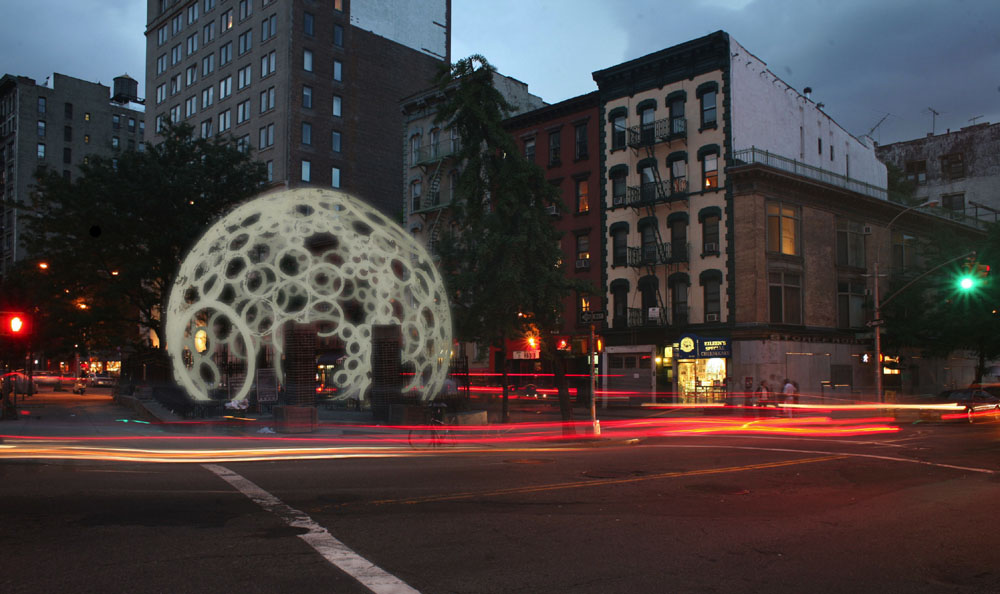 [Image: Glowing pavilion by Minsuk Cho, at the Storefront for Art and Architecture, NYC].
[Image: Glowing pavilion by Minsuk Cho, at the Storefront for Art and Architecture, NYC].New York's Storefront for Art and Architecture today kicks off nearly a month's worth of events, in celebration of the Storefront's 25th anniversary. The list of speakers is long and well-curated; they'll be speaking inside Minsuk Cho's pavilion, in Petrosino Park, and the nightly events will last until October 16.
So if you're in New York, you now have something to do every night for the next 26 days. Be sure to stop by.
(The Storefront for Art and Architecture, of course, also hosted Postopolis!)
Today's archidose #136
The high court of Punjab, in Chandigarh, India by Le Corbusier, 1955.
To contribute your Flickr images for consideration, just:
:: Join and add photos to the archidose pool, and/or
:: Tag your photos archidose
Thursday, September 20, 2007
After you left, they tore it apart


Westport, CT 1972-2007
Rudolph's building seems to be falling these days at a rate faster than even the busiest architect can throw them up. The house above in Westport received a fair amount of press earlier in the year when a last-minute attempt to save it failed.


Westerly, RI, 1956-2007
The Cerritto House in Rhode Island was spared the fate of other Rudolph creations, as its new owners moved it to Catskill, NY. Like other houses, this one depended a great deal on its site for its meaning, though I'm guessing the move is seen as a win over the apparently popular alternative these days.


Sarasota, FL, 1941-2007
Rudolph is known for many things, such as popularizing the short-lived brutalist Modernism of his Yale Art and Architecture building. He was also one of the major architects of the Sarasota School of Architecture, "a regional style of post-war architecture that emerged on Florida's Central West Coast." The Riverview High School is the latest building threatened in that state, in addition to houses like above.
While Mottalini's photos in the "after you left, they tore it apart" series strike a similar appeal as other images of ruins and the like, they serve a dual purpose of bringing attention to not only the state of these buildings shortly before their fate is sealed, but also raising the question of why such unique buildings are threatened to begin with.
(Thanks to Chris for the head's up!)
Wednesday, September 19, 2007
It came from outer space
I got home from work last night to find out, incredibly, that "[h]undreds of people in Peru have needed treatment after an object from space – said to be a meteorite – plummeted to Earth in a remote area."
 [Image: A spectacular glimpse of the Leonid meteor shower, circa 1999; photo by Wally Pacholka].
[Image: A spectacular glimpse of the Leonid meteor shower, circa 1999; photo by Wally Pacholka].The object "left a deep crater" that immediately began "spewing fetid gases," and everyone who has "visited the scene" has since "been complaining of headaches, vomiting and nausea."
A local villager, worried for himself and for his neighbors, says: "We don't know what is going on at the moment, that is what we are worried about."
It's a virus from space!
So I half-seriously expected to wake up this morning and read that the entire population of Peru has been wiped out by clouds of alien zombie-dust; that militaries have been mobilized; that families are now scrambling in all possible directions to find a safety that will no longer come; and that the catastrophe continues to spread... In eight days' time it reaches the streets of San Francisco, where I'll be live-blogging the outbreak from behind a plywood barricade.
But it turns out that we don't need to worry after all: the scientists quoted in the original article are right.
It wasn't an object from space at all but "a fireball," the appearance of which led people to hike out into the wild and find "a lake of sedimentary deposit, which may be full of smelly, methane rich organic matter."
This "rich organic matter" made everyone ill – infected by rot and vegetation. It's a kind of petro-illness.
Today's archidose #135
The Kunsthal in Rotterdam, Netherlands by Rem Koolhaas and OMA, 1992. Note the portrait of the architect at the end of the stepped corridor.
To contribute your Flickr images for consideration, just:
:: Join and add photos to the archidose pool, and/or
:: Tag your photos archidose
Tuesday, September 18, 2007
Literary Dose #14
"Digital or not, today's notion of 'sustainability' mostly refers to, and derives from, a strategy of survival: a legitimate ambition for sure, even in posthistorical times. But an ambition without drive, without impetus, and ultimately -- by definition -- without much of a future. Perhaps this is something akin to what the founding fathers of postmodernism had in mind when they foretold the 'fragmentation of master narratives.' No matter how vocal, the maintenance of the status quo cannot contend with the master narratives that preceded it. By itself, reducing energy waste is unlikely to become an exciting architectural agenda. Sustainability is already an indispensable part of any building program, its technical and economic rationale self-evident and proven. The diverse ideologies underpinning it may thrive within the general compass of a postmodern environment, but today's single-minded pursuit of a 'sustainable' development is not a postmodern vision of social responsibility. It is postmodernism run out of gas."- Mario Carpo, in "Sustainable?" from Log 10 (2007).
Monday, September 17, 2007
A Psychic Vacuum

Flickr member f.trainer wonderfully documented the various spaces a couple days after the opening. The images clearly show how the artist used "materials gleaned from local salvage yards and debris from the market's heyday," which would probably have been between the market's opening in 1940 and its eventual decline in the 1970s when supermarkets began to take hold.
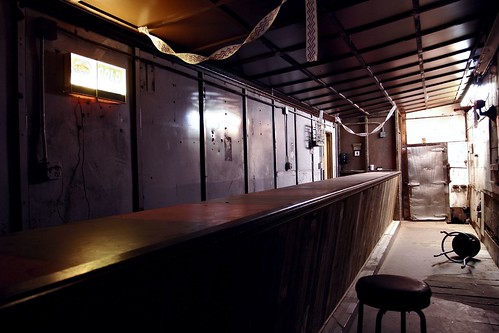
Photo by f.trainer
The line between art and environment is blurred to the extent that the former appears to be non-existent (minus the room with 80 tons of sand), as if the spaces were found in their current condition, after being inaccessible to the public since the city gained control in 1995 and closed portions of the market. To this day the market still operates, though not on the scale of its heyday.
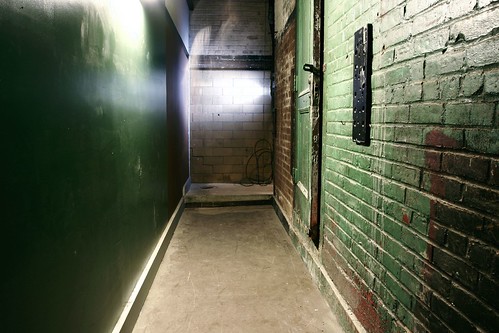
Photo by f.trainer
Of course, I can't say too much more about the spaces themselves, as I've yet to experience them in person. For sure I'll be visiting one of these weekends and will follow up with my own images and first-hand thoughts.
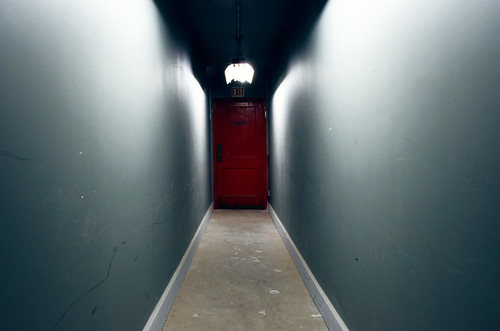
Photo by f.trainer
(Thanks to Ana Maria for the head's up!)
Limey
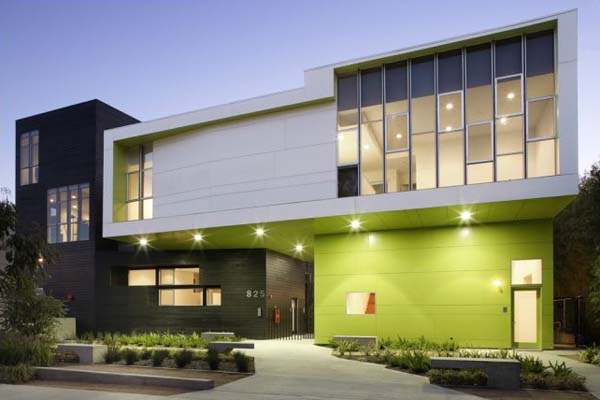 [Image: Habitat 825, by Lorcan O'Herlihy].
[Image: Habitat 825, by Lorcan O'Herlihy].In an earlier post I mentioned a housing project by LA architect Lorcan O'Herlihy.
That building, called Habitat 825 – built right next door to the Schindler House and deliberately designed so as to cast no shadows onto its historically listed neighbor – has a particularly memorable use of the color lime green.
Now, thanks to a coworker of mine, I have a few photos...
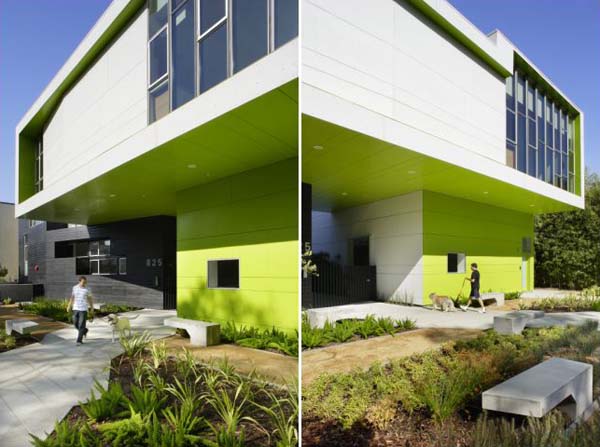
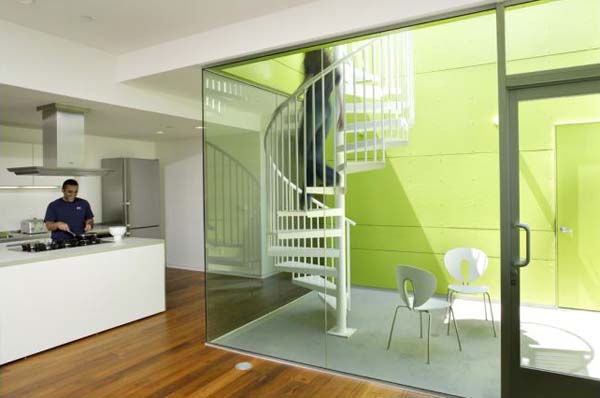
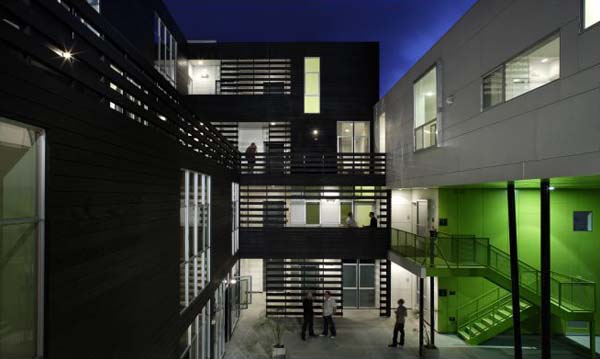 [Images: Habitat 825, by Lorcan O'Herlihy].
[Images: Habitat 825, by Lorcan O'Herlihy].And I love this building! O'Herlihy's use of volume and color just knocks me out.
For more Lorcan O'Herlihy, visit the firm's website or read this earlier post on BLDGBLOG.
(Thanks, Chelsea!)
The school of 5000 corpses
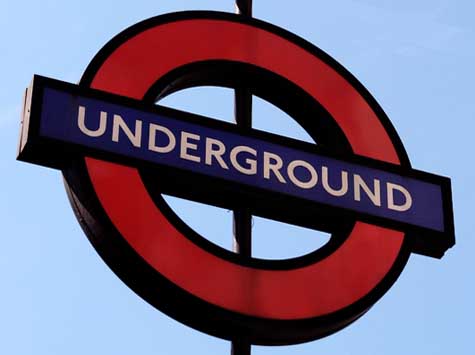 Case in point: the St. Marylebone school.
Case in point: the St. Marylebone school. With the advisory input of their architect, the school's officials decided that "the only way the school could expand physically was onwards and downwards through its pocket-sized playground."
Unfortunately, the resulting project, a "fine example of intelligent urban design, thoughtful landscape gardening, worthwhile architecture and quiet delight," dug straight into the "remains of some 5,000 corpses" almost as soon as construction began.
Rather than unearthing some super-virulent strain of the Black Death, however, sending all the small schoolgirls home coughing, decimating the population of northwest Europe... the project was completed to everyone's satisfaction, and now St. Marylebone has an underground gymnasium.
And Glancey likes what he sees. He concludes:
- It is also a project that deserves to set a precedent for much new city architecture. Much of this can be built underground, when not in flood zones, in one form or another, sometimes because this is the only way to go for a client unable to afford the price of land, or else restricted by perfectly sound conservation policies, and sometimes because – like most supermarkets, shopping malls and other structural detritus – it should be, as a matter of common decency, buried out of sight.
But imagine the future settings for novels and films! Underground malls in Canterbury. Irish theme-bars 27 stories below the surface of the Earth. Three kilometers of escalators take you down and down – and down – passing through mirrored corridors... till you arrive at the local arts cinema. There are rumors of a BMW dealership another mile or so below.
(Thanks, Nicky! Earlier on BLDGBLOG: Hello. Welcome to my squash cave)
Monday, Monday

Hanamidori Cultural Center in Tachikawa City Tokyo, Japan by Atelier Bow-Wow.
The updated book feature is Bow-Wow from Post Bubble City, by Atelier Bow-Wow.
Some unrelated links for your enjoyment:
Open Architecture Challenge
A competition to "design a sustainable multi-purpose technology facility for under-served communities," open to all.
Architectural Photography
Photographs of many contemporary buildings, in Japanese. (added to sidebar under architectural links::photography)
dod:travel
It's back...in blog form. (via Land + Living; added to sidebar under blogs::architecture)
Sunday, September 16, 2007
Today's archidose #134
Crampton Street residential development by Tate + Hindle, as part of the Elephant and Castle Regeneration Program in London's Southwark area.
To contribute your Flickr images for consideration, just:
:: Join and add photos to the archidose pool, and/or
:: Tag your photos archidose
Half Dose #36: Kolumba

This is the second building to open this year by Zumthor, whose Bruder Klaus Chapel has received much press and visitors to the private chapel in Southern Germany, due to its design as much as for the fact that Zumthor produces very few buildings.

According to Kolumba's web site, the "architecture combines the ruins of the late Gothic church St. Kolumba, the chapel 'Madonna in the Ruins' (1950), the unique archaeological excavation (1973-1976), and the new building designed by the Swiss architect Peter Zumthor."

This layering of old and new is evident on the outside walls, where the new, minimal walls sit behind the old stone walls and openings of the late Gothic church. The windows of the new building sit in front of its own walls, in a slight gesture to the layering of the church openings below.

The most distinctive element of the exterior is a band that almost rings the building, of what appears to be small openings within the masonry exterior wall. These small openings create dappled effects on the inside walls, impressive effects per the image below.

It's difficult to get a full grasp on the building and its design based on the current documentation featured on Kolumba's web site (inclusive of the images above), though I'm guessing it's just a matter of time that the building gets its fair share of treatment in the press with the usual glossy photos, architectural drawings, and maybe even a video or two.
12 Houses: The Wonderfully Puzzling and Colorful Use of Spatial Volume
The following images, meanwhile, are just a random look at three or four of O'Herlihy's most interesting projects. To start with, here is a recent building in Los Angeles, called Gardner 1050.
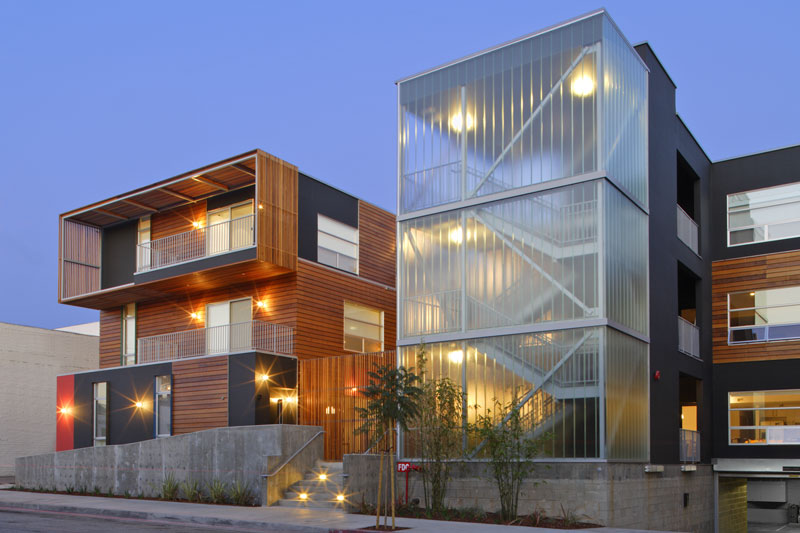
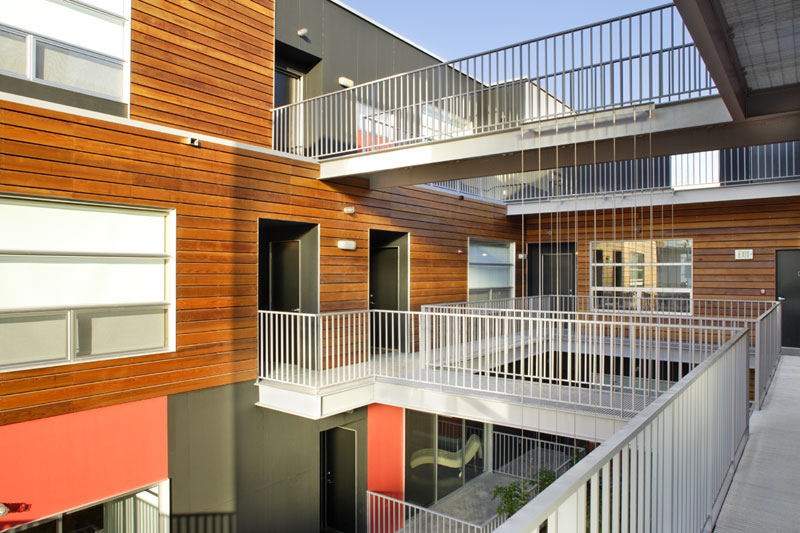 [Images: Gardner 1050, by Lorcan O'Herlihy].
[Images: Gardner 1050, by Lorcan O'Herlihy].I'm a particular fan of the outdoor footbridges, as they criss-cross a shared entry courtyard in the all-pervading sunlight of LA.
O'Herlihy, you see, has a small thing for residential bridges: these next images feature the Fineman residence – a house with its own "enclosed glass-walled bridge."
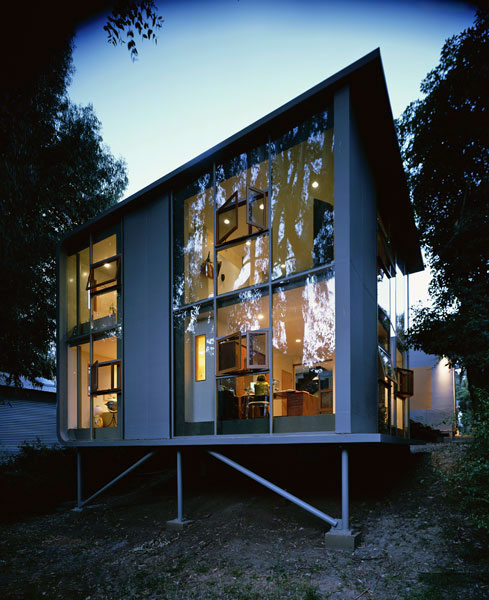
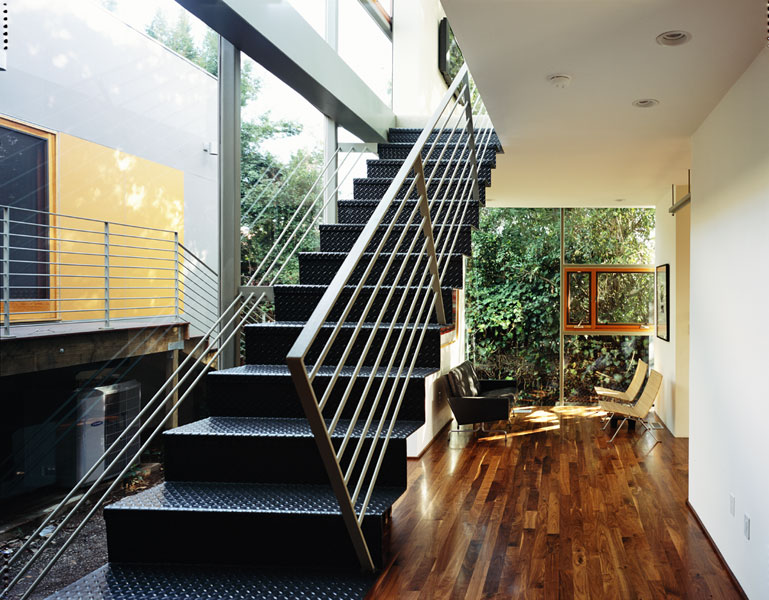 [Images: The Fineman house, by Lorcan O'Herlihy].
[Images: The Fineman house, by Lorcan O'Herlihy].This next image gives us a bird's-eye rendering of O'Herlihy's proposal for a new dormitory and "Educational Facility" at CalArts – more information about which is available on O'Herlihy's website.
 [Image: Proposal for CalArts, by Lorcan O'Herlihy].
[Image: Proposal for CalArts, by Lorcan O'Herlihy].In a nutshell, though, the circulation-friendly building complex uses a "shifted" east-west axis "to take full advantage of the complete spectrum of the optimal solar angle." This not only "supports the passive ventilation system," it means that "the need to artificially and mechanically condition an internal corridor year round can be eliminated resulting in a significant reduction in the net energy demand over the life of the building."
Below, then, you see the architectural logic behind O'Herlihy's Norton Avenue Lofts, going from a bare-bones diagram of abstract spatial volumes –
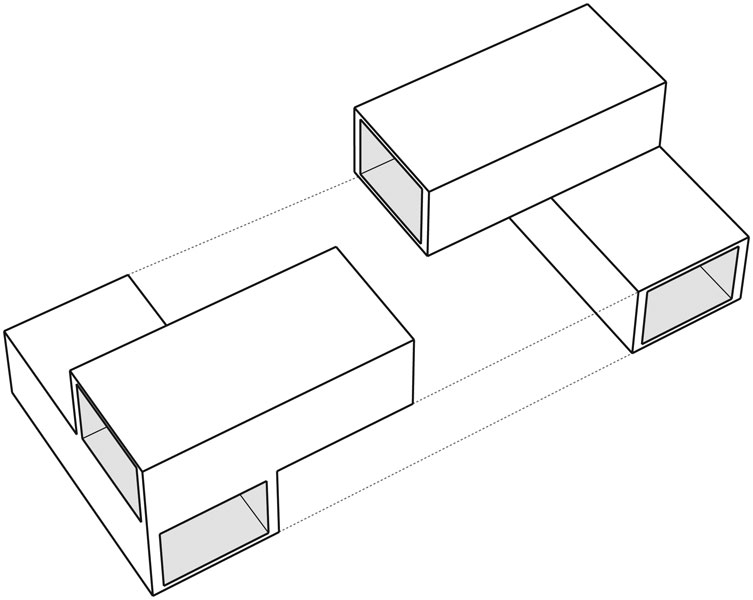 [Image: The Norton Avenue Lofts, by Lorcan O'Herlihy].
[Image: The Norton Avenue Lofts, by Lorcan O'Herlihy].– to the final renderings of the project's exterior.
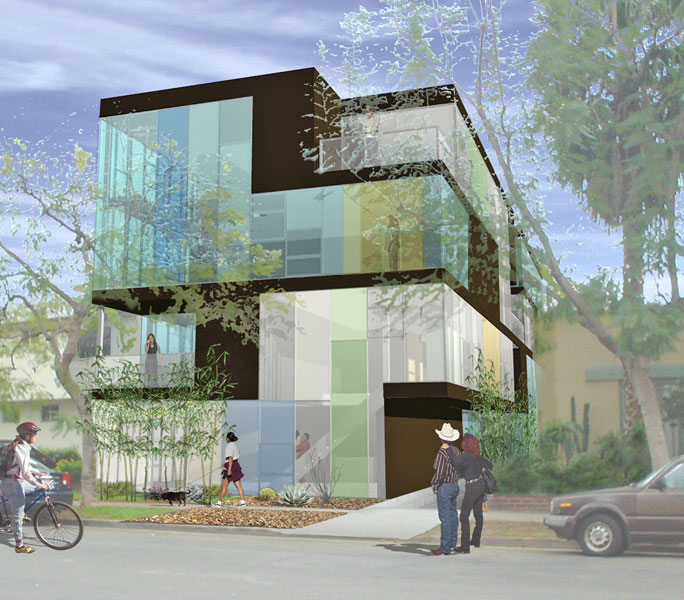
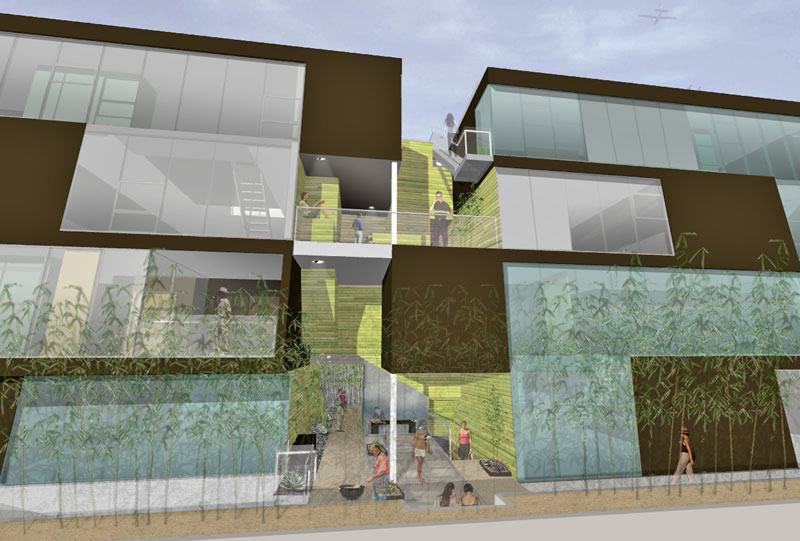 [Images: The Norton Avenue Lofts, by Lorcan O'Herlihy].
[Images: The Norton Avenue Lofts, by Lorcan O'Herlihy].In any case, I know I'm not exactly going into much detail with these projects – in fact, I'm just sort of whipping out a bunch of cool, unrelated images without offering any real or substantive analysis – but I still want to point out one more: O'Herlihy's 12 Houses, an almost Bach-like study in formal variation.
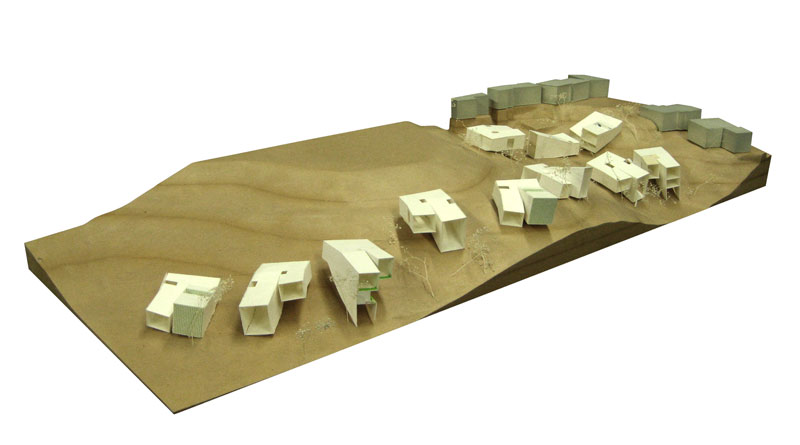 [Image: 12 Houses by architect Lorcan O'Herlihy].
[Image: 12 Houses by architect Lorcan O'Herlihy].The original idea behind 12 Houses, we read, was "to create individualized identities and experiences for each house using shared elements of design and construction."
As a result, O'Herlihy generated "four prototypes":
- Starting from a simple main floor plan consisting of two adjoined rectangular bars, a second floor is created by pulling up or pushing down one bar – either in complement or contrast to the topography of each site. From these two formal gestures, four variations emerge: up, down, long, short. Further variation is produced by siting (for privacy and views), adjustment of each prototype in response to stringent building envelope limits, and a carefully-developed palette of exterior/interior materials.
 [Image: 12 Houses by architect Lorcan O'Herlihy].
[Image: 12 Houses by architect Lorcan O'Herlihy].But let me pre-empt some criticism right away: yes, this is simply another kind of suburban sprawl, destined to grace tasteless cul-de-sacs, surrounded by well-watered lawns and reachable only by private automobile – yet the houses are also beautifully devised and formally stimulating.
I also have an active soft spot for systems like this, and so I'm easily seduced by basic variations upon simple architectural plans – the same animating principal behind Palladianism, for instance. The mathematics of the ideal villa, indeed.
 [Image: 12 Houses by architect Lorcan O'Herlihy].
[Image: 12 Houses by architect Lorcan O'Herlihy].O'Herlihy's 12 Houses are apparently slated for construction, too: they should be ready for inhabitation by Spring 2008.
For more projects by Lorcan O'Herlihy, book a visit to his firm's website.
